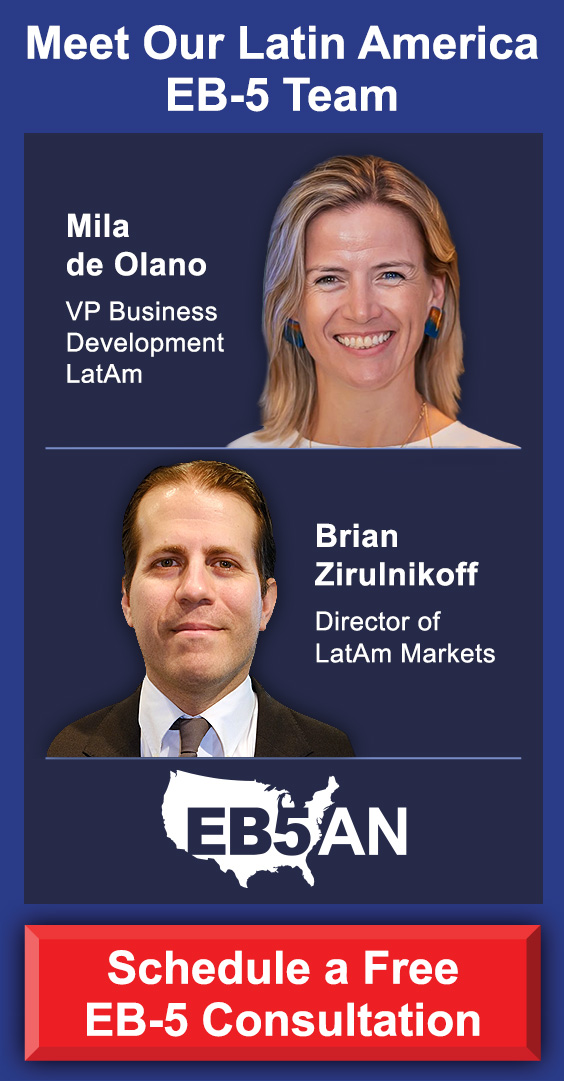For international investors seeking permanent residency in the United States, the EB-5 Immigrant Investor Program provides a unique pathway.
The foundation of the EB-5 process is an applicant’s investment. Those seeking an EB-5 visa must make a minimum investment of $800,000 for a targeted employment area (TEA) project or $1,050,000 for a non-TEA project.
For investors and their dependent family members to qualify for U.S. Green Cards, the project must then use these funds to create or maintain at least 10 full-time jobs for U.S. workers.
$800,000 (or $1,050,000) is, of course, a sizable amount. While many investors use personal savings or the proceeds from business ventures to fund their investment, an increasing number are turning to loans to fund their EB-5 investments.
This route is entirely legal, but it comes with complex regulatory requirements, particularly when it comes to proving the lawful source of funds. To help you navigate this complicated process, this article details the rules around using a loan to fund your EB-5 investment.
Understanding “Source of Funds” in the EB-5 Process
Legality of Loans as a Source of EB-5 Funds
Proving the Lawful Source of Loan Funds
The Importance of Personal Liability
Can the Loan Be Repaid Early?
Navigating Documentation Requirements
Common Pitfalls and How to Avoid Them
Why Professional Guidance Matters
EB5AN Can Help You Navigate the Process
Understanding “Source of Funds” in the EB-5 Process
In every EB-5 petition, United States Citizenship and Immigration Services (USCIS) requires investors to demonstrate that the capital used for their investment originates from a lawful source. This process—commonly referred to as proving source of funds—exists to prevent money laundering and other financial crimes, and it applies whether the funds come from personal earnings, business profits, gifts, inheritance, loans, or any combination of these options.
To satisfy this requirement, investors must trace the funds from their origin to the EB-5 investment account. This often includes submitting several layers of documentation, such as tax returns, employment income records, real estate sale contracts, or bank statements, depending on how the capital was obtained.
If the funds are borrowed, both the investor and the lender must prove that the loan was issued legally and that its underlying assets were lawfully acquired.
USCIS applies a “preponderance of the evidence” standard, meaning your documentation must show that it is more likely than not that the funds were obtained lawfully.
Incomplete or poorly supported applications may result in requests for evidence (RFEs) or denials. As such, investors are strongly encouraged to work with professionals who can help prepare a detailed and transparent source-of-funds report.
Legality of Loans as a Source of EB-5 Funds
USCIS has undergone notable policy shifts in how it treats loans used for EB-5 purposes. In the past, USCIS did not permit investors to use unsecured loans. Only secured loans, backed by the investor’s personal assets, were considered valid.
However, the pivotal Zhang v. USCIS decision challenged this stance, and USCIS subsequently revised its policy to permit both secured and unsecured loans as lawful sources of funds—provided the funds are properly documented and the investor is personally liable for repayment.
This legal evolution has made the loan pathway more accessible to a broader range of investors.
Nonetheless, USCIS still rigorously examines loan-based investments to ensure full compliance with EB-5 program requirements.
Proving the Lawful Source of Loan Funds
The cornerstone of every EB-5 petition is demonstrating that the capital being invested comes from a lawful source. Critically, when the investment capital is borrowed rather than earned directly, both the origin of the loan and how the lender obtained those funds must be carefully documented.
If the loan comes from a financial institution, the investor must provide proof that the institution is legally authorized to lend and that the funds originated through legitimate business operations. If the lender is a private individual, such as a friend or family member, additional documentation is required, including the lender’s financial records, tax returns, and a clear paper trail establishing the legal origin of the funds.
In either scenario, USCIS expects a full accounting of how the loan was made, where the money came from, and how it moved from the lender to the investor and eventually into the EB-5 project.
The Importance of Personal Liability
One of the most significant requirements for using a loan is that the EB-5 investor must secure it with their personal assets. The EB-5 enterprise or investment itself cannot be used as collateral for the loan.
Secured loans are often backed by the investor’s real estate, stocks, or other personal assets. In such cases, as part of their source of funds, the investor must provide property deeds, appraisal documents, or other records to prove lawful ownership and adequate collateral value.
Unsecured loans are permitted, but they may be examined more closely to ensure they are bona fide financial obligations and not disguised gifts.
Can the Loan Be Repaid Early?
As an EB-5 investor, taking out a loan means the borrowed funds become your legally controlled capital. USCIS regulations require only that the investment capital is lawfully obtained and that the investor holds legal ownership of the funds.
Provided you can fully document the source and legality of the loan proceeds, paying the loan back early does not negatively impact your EB-5 application. Only your invested funds—not the loan you took out to make the investment—must be sustained for a minimum amount of time.
The key is demonstrating that the funds were both lawfully sourced and under your control at the time of investment.
Navigating Documentation Requirements
Given the scrutiny applied to EB-5 loan cases, documentation plays a critical role in the approval process.
EB-5 applicants using a loan to fund their investment must be prepared to present the following information to USCIS:
- A formal loan agreement with clearly defined terms
- Evidence of the investor’s personal liability
- Documentation of the lender’s financial background and lawful acquisition of funds
- Full tracing of the capital, from the lender’s account to the EB-5 investment
- Collateral documentation (if the loan is secured)
- Certified translations for any foreign-language documents
USCIS adjudicators will look for consistency, legal compliance, and economic substance in these documents. As previously mentioned, missing or unclear information often leads to RFEs, delays, or outright denials.
Common Pitfalls and How to Avoid Them
Investors exploring a loan-funded EB-5 path should be aware of frequent mistakes that can undermine their petitions.
Firstly, investors must ensure that they are not relying on loans backed by EB-5 project assets, which violates the program requirements.
Secondly, investors must provide adequate evidence of the lender’s legal income or source of capital.
Thirdly, investors must rigorously trace the money through every step of the transfer process, including the movement of the loaned funds into the EB-5 project itself.
Lastly, investors must submit thorough and comprehensive loan agreements. This is especially important for personal loans, which may have informal or poorly drafted agreements set up between two individuals.
Each of these issues can raise red flags with USCIS. Ensuring a fully compliant and well-documented application requires foresight and often the guidance of experienced EB-5 attorneys and financial advisors.
Why Professional Guidance Matters
The regulatory landscape of EB-5 financing is always evolving. Laws, policies, and interpretations change, and immigration officers frequently examine loan-based applications rigorously. This makes the support of legal and financial professionals indispensable.
An experienced EB-5 attorney, especially one with experience related to your country of origin, can help structure the loan appropriately, prepare documentation that meets USCIS standards, and time the investment to optimize your petition’s chances.
Financial advisors can also ensure your loan terms meet both legal and commercial norms, reducing the risk of your petition being flagged for review.
EB5AN Can Help You Navigate the Process
Using a loan to fund your EB-5 investment is a legitimate and increasingly popular approach, particularly for high-net-worth individuals with valuable assets but limited liquid capital. Success, however, depends on two critical factors: meticulous documentation and strict compliance with USCIS requirements.
From proving the lawful source of funds to demonstrating personal liability and ensuring your investment remains at risk, the path to EB-5 approval using loan proceeds is complex but navigable with the right strategy and support. For many investors, this route opens the door to U.S. residency without having to liquidate core assets, provided they proceed with diligence, care, and expert guidance.
At EB5AN, we have worked with investors using all kinds of funds, including loans, to source their investments. In our 10+ years of history, we have helped more than 2,700 families from 70+ countries become lawful permanent residents of the United States. Our team has more than a decade of experience, and we offer our clients first-rate, low-risk EB-5 regional center projects with a 100% USCIS project approval rate.
If you would like to know more about your EB-5 investment options, book a free call with our expert team today.











